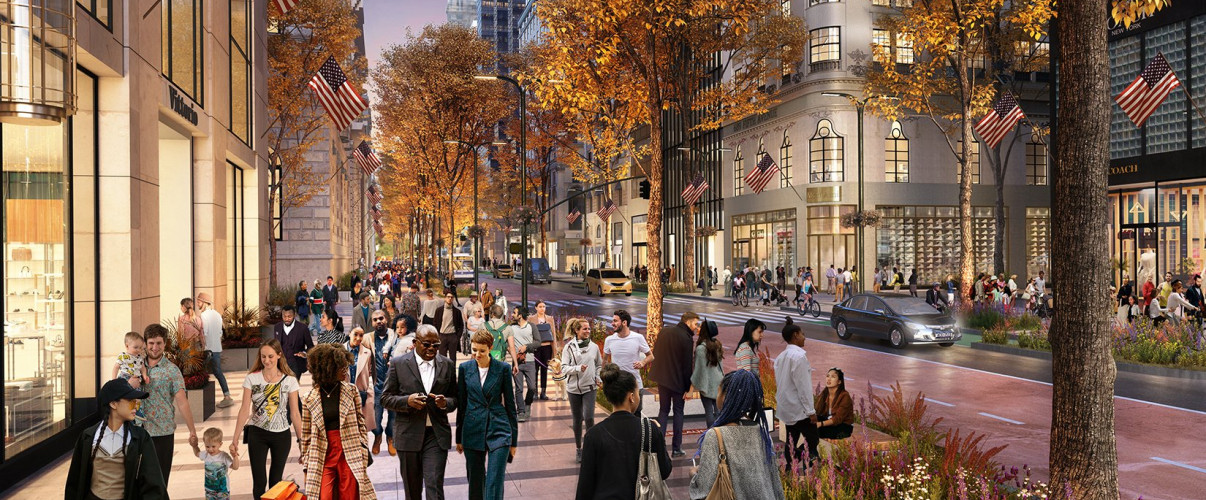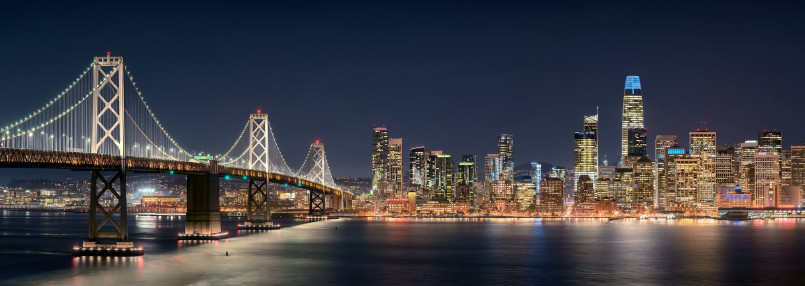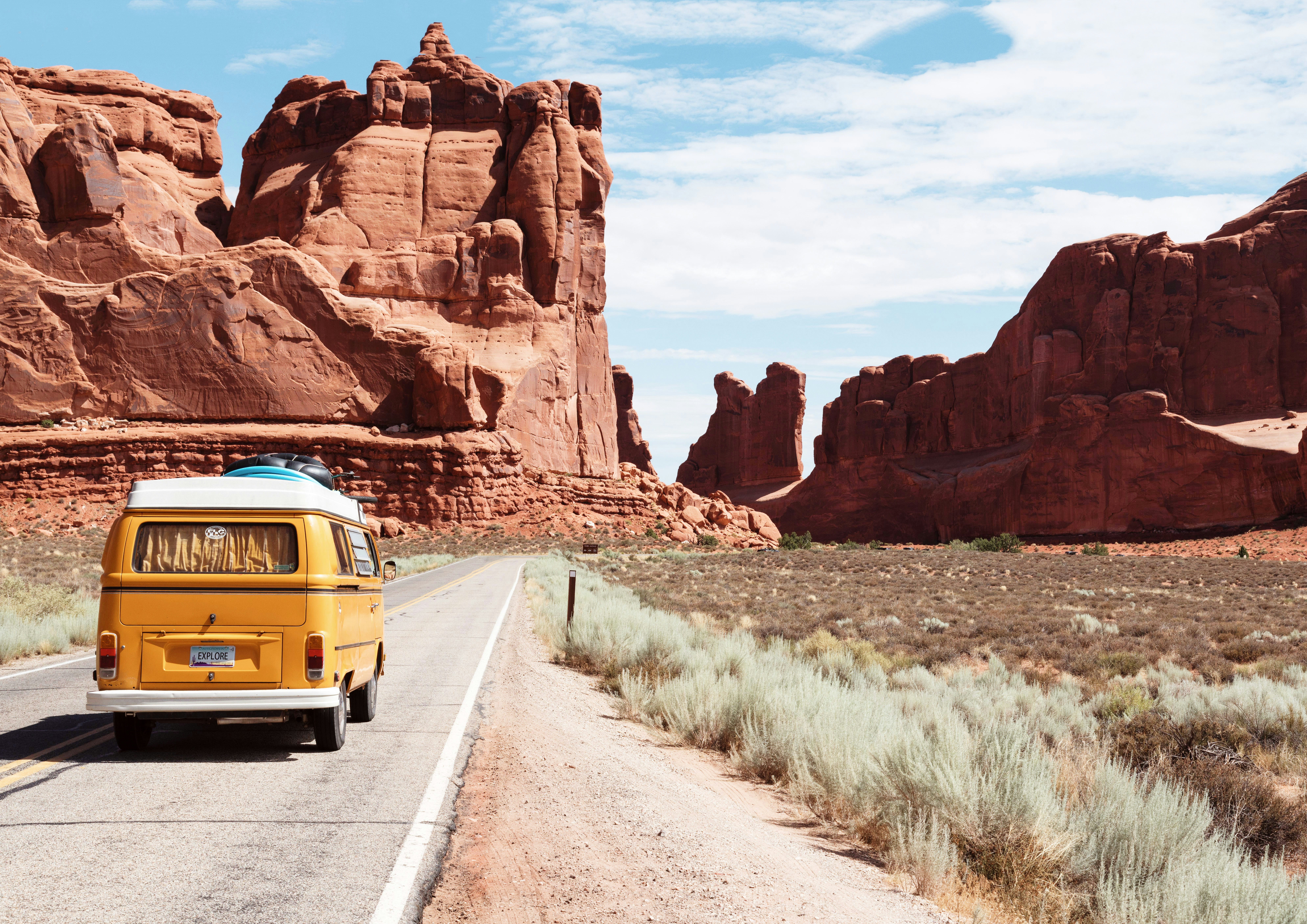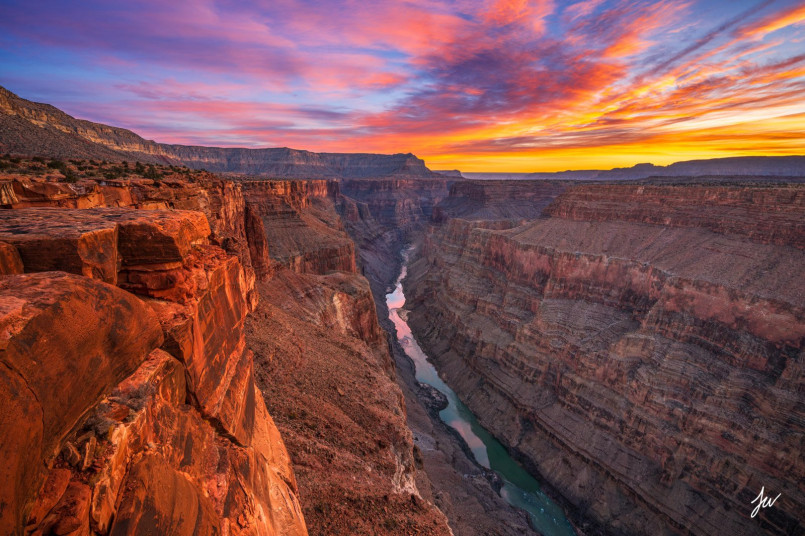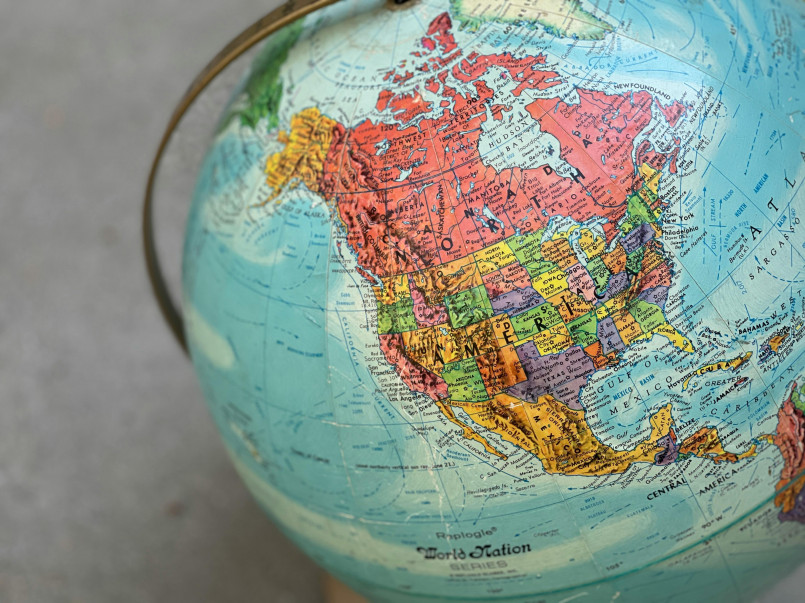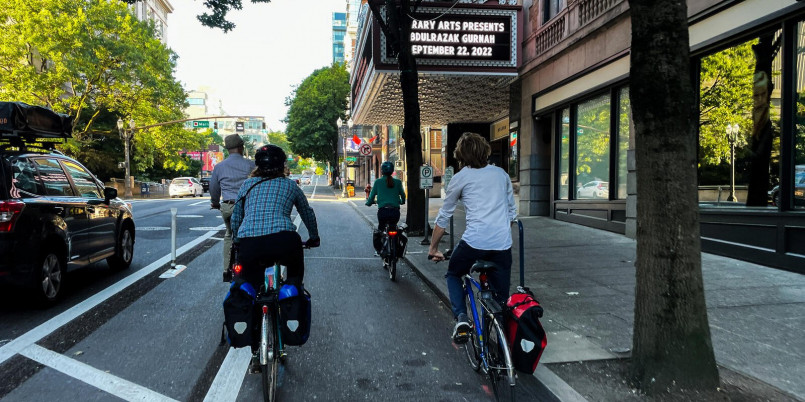Walking is arguably the best way to truly experience a city\'s character. These pedestrian-friendly American cities offer the perfect blend of compact neighborhoods, scenic pathways, historical architecture, and vibrant street life that make exploring on foot both practical and delightful.
There's something magical about experiencing a city on foot-discovering hidden gems down narrow alleys, stumbling upon local cafés, and absorbing the authentic atmosphere that you might miss from behind a car window. The United States offers several metropolitan areas specifically designed or naturally evolved to be pedestrian paradises .
Whether you're a tourist looking to maximize your sightseeing or someone considering a car-free lifestyle, these American cities offer the infrastructure, compact design, and pedestrian amenities that make walking not just possible but genuinely enjoyable. Let's lace up our walking shoes and explore America's most foot-friendly urban landscapes.
New York City
Often ranked as America's most walkable city , New York-particularly Manhattan-was designed with a grid system that makes navigation intuitive even for visitors. The city's dense concentration of attractions, restaurants, and shops means you're rarely more than a few blocks from something interesting.
The transformation of the High Line into an elevated urban park provides a unique walking experience above the bustling streets. Central Park offers 843 acres of paths and green space, while Brooklyn's Prospect Park provides a similar escape in that borough.
New York's public transportation system means you can easily combine walking with subway rides when distances become too great, making a car completely unnecessary for most visitors and many residents.
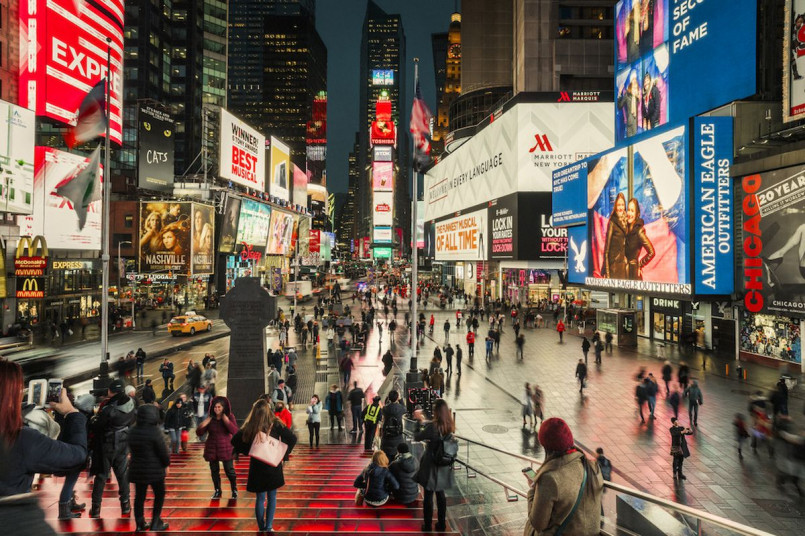
San Francisco
Despite its infamous hills, San Francisco ranks extremely high for walkability. The compact nature of the city-just 49 square miles-means many attractions are within walking distance of each other. The city's distinctive neighborhoods each offer their own character to explore.
Don't miss walking across the Golden Gate Bridge for spectacular views or exploring the Embarcadero waterfront from the Ferry Building to Fisherman's Wharf. The 1.5-mile stretch of Lombard Street including the "crookedest street in the world" section offers a quintessential San Francisco walking experience.
While hills can be challenging, they reward walkers with breathtaking vistas, and the city's excellent public transportation system provides alternatives when your legs need a break.
Boston
As one of America's oldest major cities, Boston developed long before automobiles, resulting in a compact, pedestrian-friendly downtown. The city proudly promotes its walkability with the Freedom Trail , a 2.5-mile red-brick path connecting 16 historically significant sites.
Boston's Back Bay neighborhood features wide sidewalks and beautiful brownstones, while Beacon Hill charms with its narrow, gas-lit streets and Federal-style row houses. The extensive Emerald Necklace park system, designed by Frederick Law Olmsted, provides green walking routes throughout the city.
Boston also benefits from a relatively flat topography in many areas, making it accessible for walkers of all abilities. The comprehensive T subway system complements walking when needed.
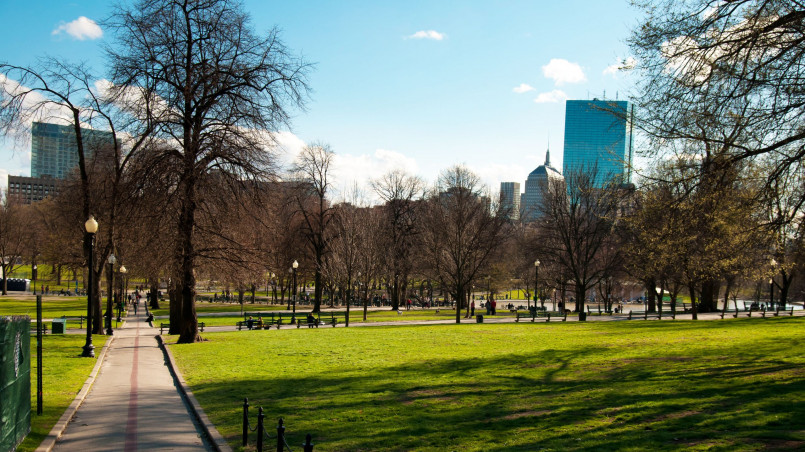
Chicago
Chicago's downtown Loop and surrounding neighborhoods offer exceptional walkability with wide sidewalks and an easy-to-navigate grid system. The city's Lakefront Trail stretches 18 miles along Lake Michigan, providing scenic walking opportunities away from traffic.
The Chicago Riverwalk offers a beautiful pedestrian path in the heart of downtown, while Millennium Park and Grant Park provide expansive green spaces perfect for strolling. The Magnificent Mile on Michigan Avenue delivers a premier urban walking experience with shops, restaurants, and architectural marvels.
Chicago's elevated 'L' train system and comprehensive bus network complement walking exploration, especially during the city's challenging winter months.
Philadelphia
Philadelphia's historic core around Independence Mall was designed before cars, creating naturally walkable streets and blocks. The Center City district ranks among the most pedestrian-friendly urban areas in America.
Society Hill and Old City feature charming cobblestone streets and historic architecture, while Rittenhouse Square offers a European-style park experience surrounded by upscale shops and restaurants. The Schuylkill River Trail provides a scenic walking path along the western edge of Center City.
Philadelphia's compact downtown means most attractions are within a 20-30 minute walk of each other, and the SEPTA public transportation system fills in any gaps for longer journeys.
Washington, DC
The nation's capital was designed with grand avenues and public spaces perfect for pedestrians. The National Mall offers an unparalleled walking experience with monuments, museums, and memorials along a two-mile stretch of green space.
Historic Georgetown charms with Federal-style architecture and brick sidewalks, while Dupont Circle and Adams Morgan offer vibrant neighborhood walking experiences. Rock Creek Park cuts through the city with miles of walking trails.
DC's Metro system is clean and efficient, making it easy to combine walking exploration with public transit. The city's relatively flat topography also contributes to its walkability.
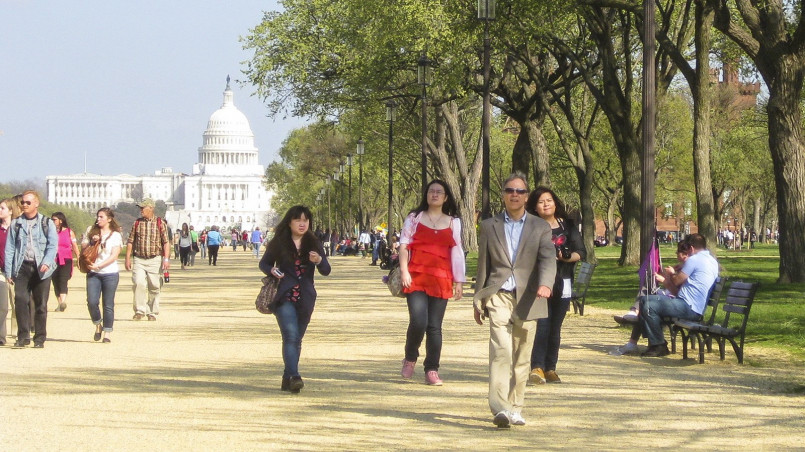
Portland, Oregon
Portland has deliberately cultivated walkability through smart urban planning. The city features compact blocks (200 feet compared to 400+ in many cities), extensive pedestrian infrastructure, and dedicated pedestrian-only zones.
The city's Pearl District transformed former industrial areas into walkable mixed-use neighborhoods. Tom McCall Waterfront Park offers a scenic walking path along the Willamette River, while Forest Park provides over 80 miles of hiking trails within city limits-the largest urban forest reserve in the United States.
Portland's comprehensive public transportation system and bike-friendly infrastructure complement its pedestrian amenities, making car-free exploration easy and enjoyable.
Seattle
Despite its hilly topography, Seattle offers excellent walkability in many neighborhoods. The waterfront area provides scenic walking opportunities, particularly after recent renovations removed the Alaskan Way Viaduct and expanded pedestrian space.
Pike Place Market and the surrounding downtown core offer compact, interesting urban walking experiences. The Capitol Hill neighborhood delivers vibrant street life with excellent pedestrian infrastructure.
Green Lake, Discovery Park, and the Burke-Gilman Trail provide recreational walking opportunities, while the city's comprehensive bus system and expanding light rail network help overcome topographical challenges for longer journeys.
Savannah, Georgia
Savannah's historic district represents one of America's finest examples of planned walkable urbanism. The city's distinctive grid pattern includes 22 historic squares -small parks with fountains, monuments, and magnificent oak trees draped with Spanish moss-creating natural rest points for pedestrians.
The 2.5-square-mile historic district features wide sidewalks, human-scale architecture, and minimal elevation changes. Forsyth Park provides a larger green space at the southern end of the historic district.
Savannah's walkability is enhanced by its mild climate through much of the year (though summer humidity can be challenging). The city's free DOT shuttle service connects major points of interest when walking distances become too great.
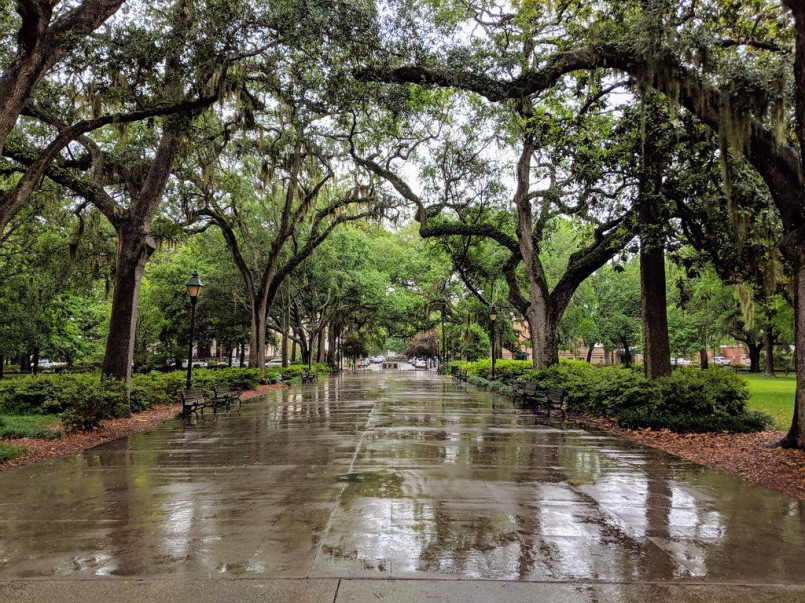
New Orleans
The French Quarter and surrounding historic neighborhoods offer exceptional walkability with narrow streets, architectural interest on every block, and vibrant street life. The Quarter's pedestrian-focused design dates back to the 18th century, long before automobiles.
Beyond the French Quarter, the Garden District showcases magnificent historic homes along tree-lined streets with good sidewalk infrastructure. The St. Charles Avenue streetcar line complements walking, allowing visitors to ride one way and walk back.
Audubon Park and City Park provide green walking opportunities away from urban streets. New Orleans' flat topography is advantageous for pedestrians, though the climate can be challenging during summer months.
What Makes a City Walkable?
Several factors contribute to a city's pedestrian-friendliness:
- Density : A concentration of destinations within walking distance
- Mixed-use development : Residential, commercial, and recreational spaces intermixed
- Quality sidewalks : Wide, well-maintained pedestrian pathways
- Street design : Traffic calming measures, crosswalks, and pedestrian signals
- Public spaces : Parks, plazas, and gathering areas accessible on foot
- Safety : Well-lit streets and active ground-floor uses that create "eyes on the street"
- Public transportation : Complementary transit systems that connect walkable nodes
- Climate and topography : Weather conditions and elevation changes that affect walking comfort
Organizations like Walk Score evaluate these factors to rank cities' walkability, with scores above 70 considered very walkable and above 90 deemed a "walker's paradise."
Tips for Urban Walking Adventures
To make the most of exploring these walkable cities:
- Wear comfortable shoes designed for walking on hard surfaces
- Layer clothing to adjust for changing weather and indoor/outdoor temperature differences
- Carry water and know where public fountains are located
- Use offline maps that work without data connections
- Research self-guided walking tours or join organized walking groups
- Plan routes around public restrooms and rest areas
- Consider weather forecasts and time of day for optimal comfort
- Alternate walking days with other activities to prevent fatigue
Walking a city reveals its true character in ways that driving never can. The texture of neighborhoods changes block by block, architectural details become apparent, and spontaneous interactions with locals happen naturally. For travelers seeking authentic experiences and residents looking to connect more deeply with their surroundings, these walkable American cities offer the perfect opportunity to slow down and experience urban life at human speed.
Frequently Asked Questions About 10 Most Walkable US Cities for Urban Explorers in 2025
Which US city is considered the most walkable?
New York City consistently ranks as America's most walkable major city, with a Walk Score of 88/100. Manhattan in particular scores even higher due to its grid layout, density of attractions, and excellent public transportation. San Francisco follows closely behind with an 87/100 score despite its challenging hills.
How should I prepare for walking in cities with challenging weather?
Layer clothing appropriately for the season and check weather forecasts before heading out. In hot southern cities like New Orleans and Savannah, walk during morning or evening hours, wear sun protection, and carry water. For northern cities in winter, wear waterproof footwear, warm layers, and consider traction devices for icy conditions. Many walkable cities also offer indoor alternatives like underground tunnel systems in Chicago or Montreal.
Are these walkable cities safe for pedestrians at night?
Major tourist and business districts in these cities are generally safe for walking at night, especially with normal precautions. Well-lit areas with active nightlife like New York's Times Square, Boston's Faneuil Hall area, or Chicago's Magnificent Mile maintain high pedestrian volumes even after dark. However, like any urban area, it's wise to research specific neighborhoods, stay aware of your surroundings, and consider using rideshare services late at night in unfamiliar areas.
How can I find the best walking routes in these cities?
Many cities offer official walking maps through their tourism offices or visitor centers. Mobile apps like AllTrails, MapMyWalk, and city-specific walking tour apps provide curated routes. Websites like Walking Tours of America and Free Tours by Foot offer both self-guided and guided options. Local bookstores in these cities often carry walking guide books with themed routes focusing on architecture, history, or culinary experiences.
What are some hidden walking gems in these cities that tourists often miss?
In New York, explore the elevated Greenway in Battery Park City. Chicago's Promontory Point offers spectacular skyline views from a lakefront peninsula. In San Francisco, the Presidio's ecology trails provide nature immersion minutes from downtown. Washington DC's Embassy Row along Massachusetts Avenue showcases international architecture. Boston's Southwest Corridor Park offers a 4.7-mile linear park with gardens. Portland's 4T Trail combines trails, tram, trolley and train for a unique urban hiking experience.
How accessible are these walkable cities for people with mobility challenges?
Accessibility varies by city and neighborhood age. Newer developments generally offer better accessibility with curb cuts, ramps, and smoother surfaces. Washington DC, with its relatively newer infrastructure, ranks highly for accessibility. Boston and New Orleans face challenges with historic cobblestone streets and older infrastructure. Most cities offer accessibility maps highlighting routes suitable for wheelchairs and those with mobility devices. Public transportation accessibility also varies, with newer systems typically offering better accommodations.
